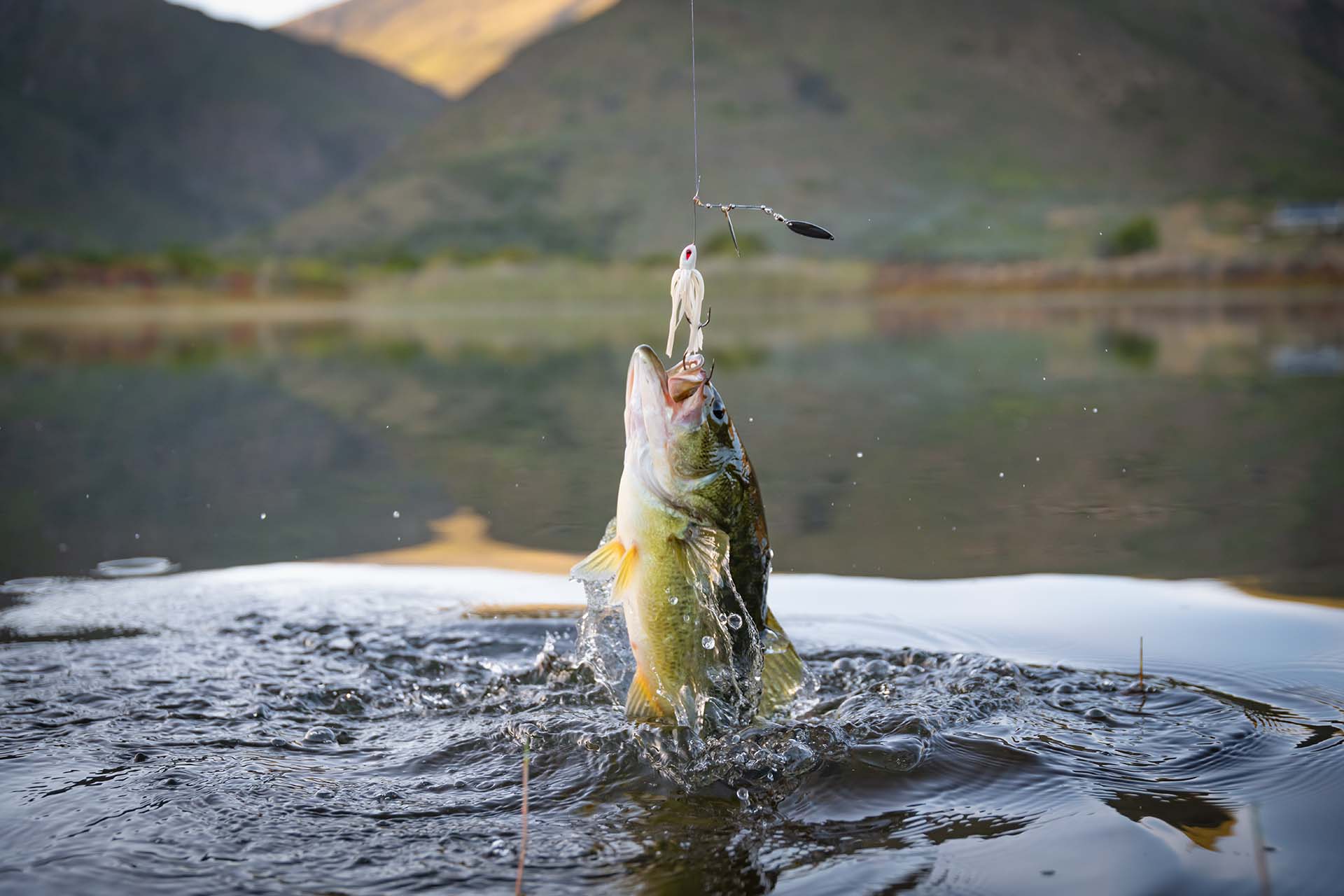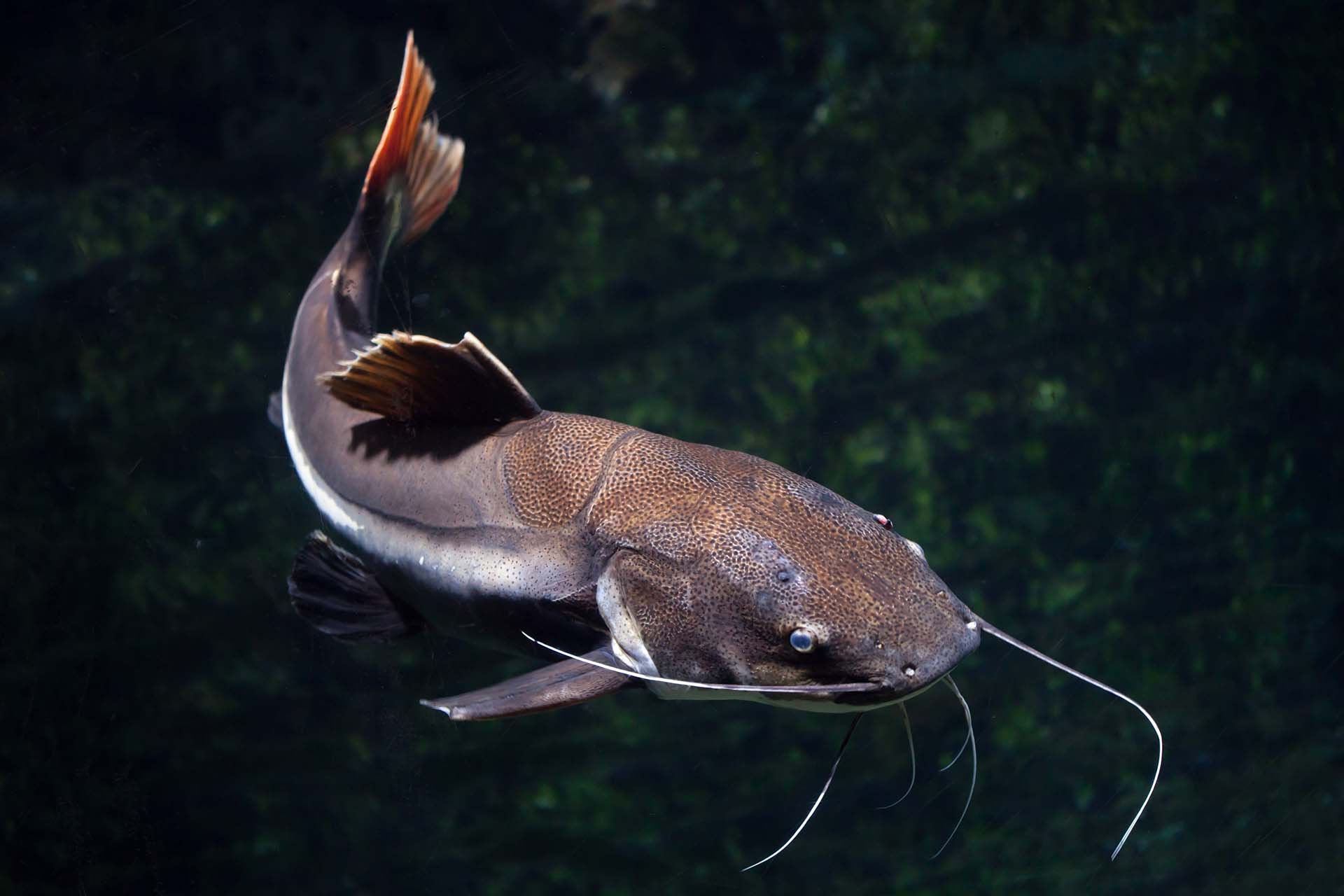The journey through the waters of the Great North reveals a hidden world of aquatic giants. Among them, the biggest freshwater fish in North America claim their throne, showcasing grandeur and mystery. From awe-inspiring lengths to staggering weights, these fish are not just big – they’re the stuff of fishing legends. Grab your gear, and let’s uncover the titans of the freshwater world.
The ancient white sturgeon takes the top spot, closely followed by the powerful alligator gar, the genteel Mississippi paddlefish, and the elusive muskellunge. The blue catfish, the northern pike, and the American eel are also notable mentions. Besides the record-setting sizes, these species show incredible diversity and ecological significance in this part of the world.
#1 White Sturgeon Takes the Throne – This Ancient Giant Is the Biggest Freshwater Fish in North America
White sturgeon is a freshwater species considered one of the biggest fish in North America, and they’re truly a sight to behold. Their elongated, torpedo-shaped bodies, armored with rows of bony plates called scutes, hint at their ancient lineage. Ironically, white sturgeon are often gray or brownish. Also, they boast a distinctive shark-like tail and barbels perfectly designed for bottom feeding. Making them unique among freshwater inhabitants.
When it comes to size, the largest recorded specimen in recent times stretched to an impressive 11 feet (3.4 meters). History whispers tales of even more gargantuan sturgeons of up to 20 feet (6.1 meters) long, tipping the scales at over 1,500 pounds (680 kg). These extraordinary sizes have become rarer, impacted by changes in their habitats and the problem of overfishing. However, these creatures are still magnificent to this day.
White Sturgeon Habitat and Distribution – Where Do These Giants Lurk?
The white sturgeon’s domain stretches impressively from the chilly waters of Alaska down to the sun-kissed shores of central California, tracing the Pacific Coast. While they predominantly make their home in freshwater. Also, these adaptable giants can sometimes be found in marine environments as well, making them one of the biggest saltwater fish around. Here are the key habitats of the white sturgeon:
- Large rivers – provide extensive, deep channels ideal for the sturgeon’s growth and migration,
- Lakes – calm and expansive, lakes offer a serene environment for these fish, with ample food and space,
- Reservoirs – human-made yet suitable reservoirs mimic natural river conditions, supporting the sturgeon’s life cycle.
In the 1800s, white sturgeons were highly sought after, primarily for their valuable caviar. This intense demand led them to the brink of endangerment. However, through dedicated conservation efforts, stringent regulations, and necessary fishing licenses, their numbers have seen a revival.
#2 Alligator Gar – Another Prehistoric Powerhouse With a Bite to Match
The alligator gar, another living relic from prehistoric times, cuts an imposing figure in the waters of North America. Its name, inspired by the alligator’s fearsome jaw, hints at its remarkable predatory capabilities. All thanks to this powerful snout filled with sharp teeth. Here are the other distinguishing features of this fish species:
- Long, robust, and torpedo-like body shape, suited for agile swimming,
- Tough, diamond-shaped scales akin to armor plating,
- A substantial and muscular build.
When it comes to size, alligator gars are truly monumental. The heaviest recorded individual tipped the scales at a staggering 327 pounds (148 kg), according to Field & Stream’s Steven Hill. Beyond their size, these fish are known for their impressive longevity, often surpassing 50 years in age.
What Is the Habitat Range of the Alligator Gar?
Alligator gars are predominantly freshwater dwellers, thriving in the lush wetlands that dot the landscape. These adaptable giants are also known to venture into brackish coastal and marine waters on occasion.
Historically, they were widespread throughout the Mississippi River and its larger tributaries. However, the industrial transformation of North America dramatically altered their habitat. This led to restricted access to crucial spawning grounds. Significantly impacting their populations. Today, thanks to effective conservation measures and sustainable practices, alligator far populations are in a healthier state.
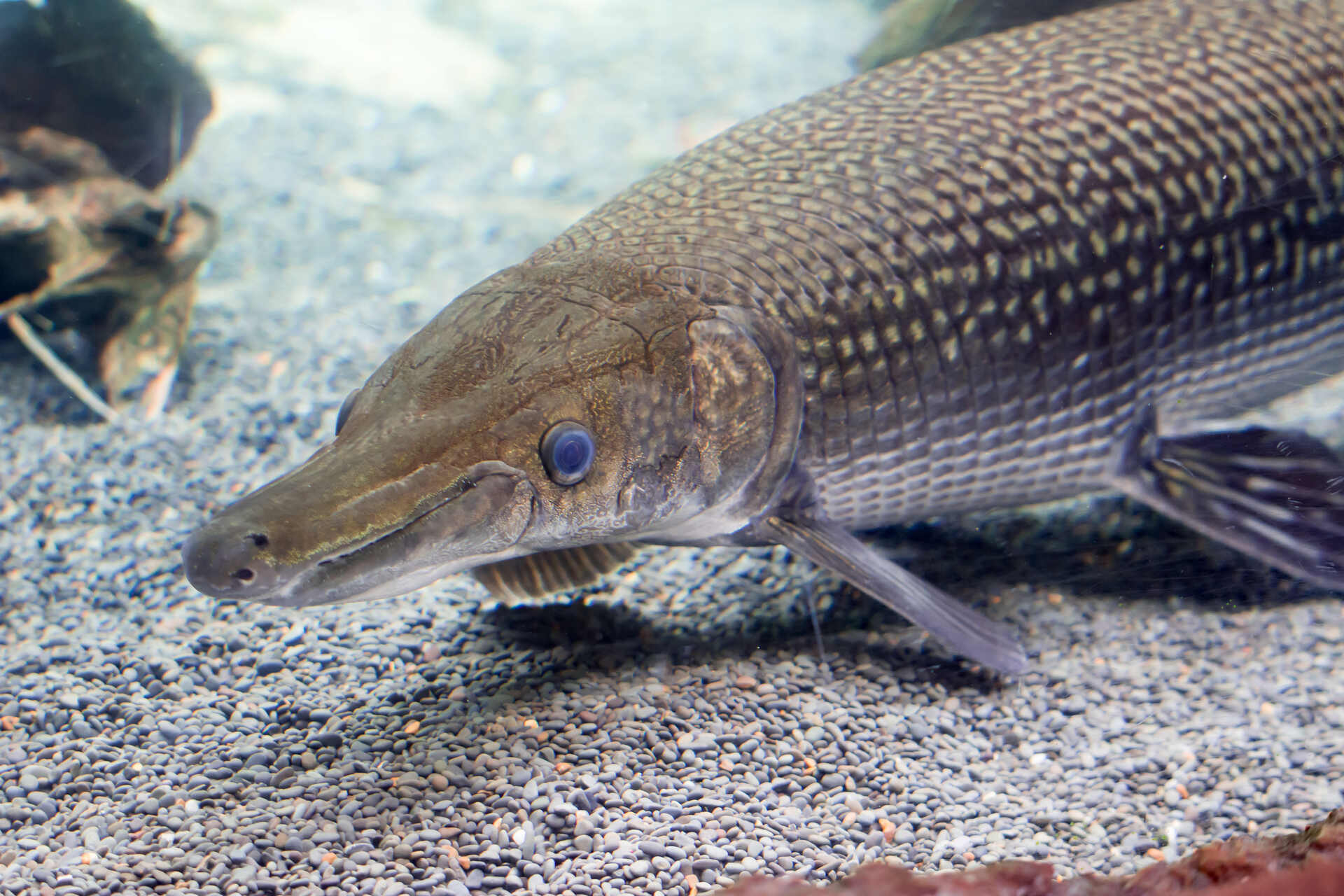
#3 Mississippi Paddlefish – The Genteel Giants With a Spoon-Billed Surprise
The Mississippi paddlefish, a true gentle giant of North American waters, stands out with its unique appearance. Often overshadowed by more aggressive species, the paddlefish remains a fascinating subject for both anglers and naturalists. Here are their distinguishing physical characteristics:
- A large, flat, and elongated snout resembling a paddle,
- A smooth, scaleless body with a shark-like appearance,
- Long gill rakers that are used for filter feeding.
In terms of sheer size, the Mississippi paddlefish is a record-setter. The world’s largest specimen was reeled in not long ago, in 2021. As reported by the Oklahoma Department of Wildlife Conservation, Grant Radar marked his 18th birthday with the catch of a lifetime – a massive 164-pound (74 kg) paddlefish. A lot of them can reach 7 feet (2.1 meters) in length, and due to their elongated rostrum, they are easily caught as bycatch in fishing nets.
What Are the Preferred Environments of Mississippi Paddlefish?
As you might expect, this rare and intriguing species is primarily found in the expansive waters of the Mississippi River. But they can also be found in the Great Lakes. This species is part of a highly endangered group, with only two known species surviving into the modern era. Sadly, the Mississippi paddlefish’s only known relative was declared extinct in 2022, a casualty of dam constructions along China’s Yangtze River.
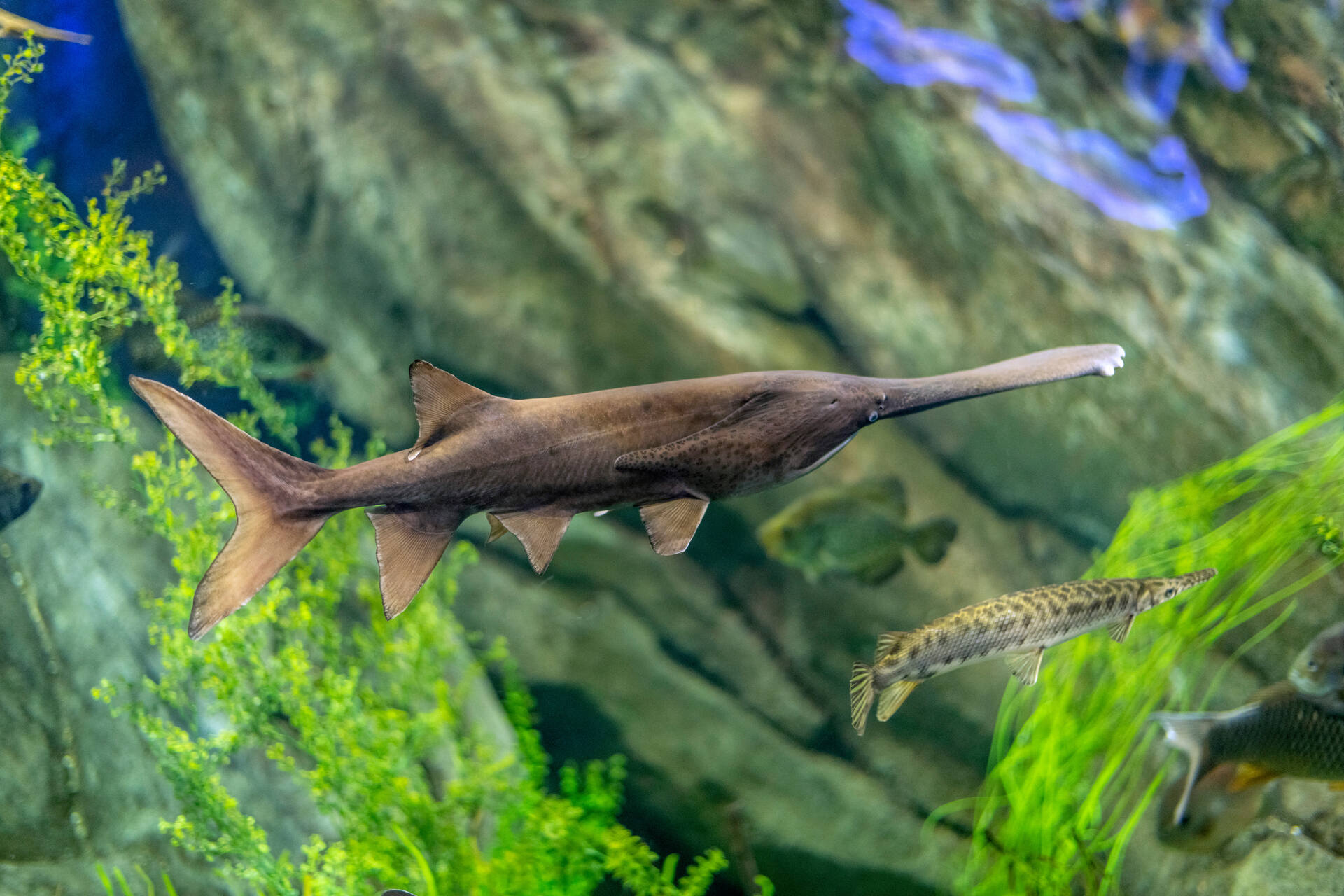
#4 Muskellunge – The Freshwater Phantom With Fins
Known in fishing slang as muskie, this species is the largest member of the Esocidae family, which includes pikes, pickerels, and mudminnows. They dominate their habitats, capable of hunting and capturing sizable prey, including large birds and fish.
Muskies can weigh up to 36 pounds (16.3 kg), but larger specimens are not rare. For decades, the record was held by a muskie weighing 69 pounds (31.3 kg), caught by Arthur Lawson in the St. Lawrence River in 1957. However, this record was surrounded by controversy, as subsequent analysis of photographs raised doubts about the actual size of Lawson’s catch. This ultimately resulted in Lawson’s catch being dethroned from its world record status.
Which Habitats Are Muskies Thriving In?
Muskellunge are particularly fond of clear water bodies where temperatures hover between 67°F (19°C) to 72°F (22°C). Here are some specific locations you can catch them in:
- Northern Michigan, Wisconsin, and Minnesota,
- The Great Lakes region,
- Chautauqua Lake in western New York,
- Most of the St. Lawrence River drainage,
- Upper Mississippi Valley.
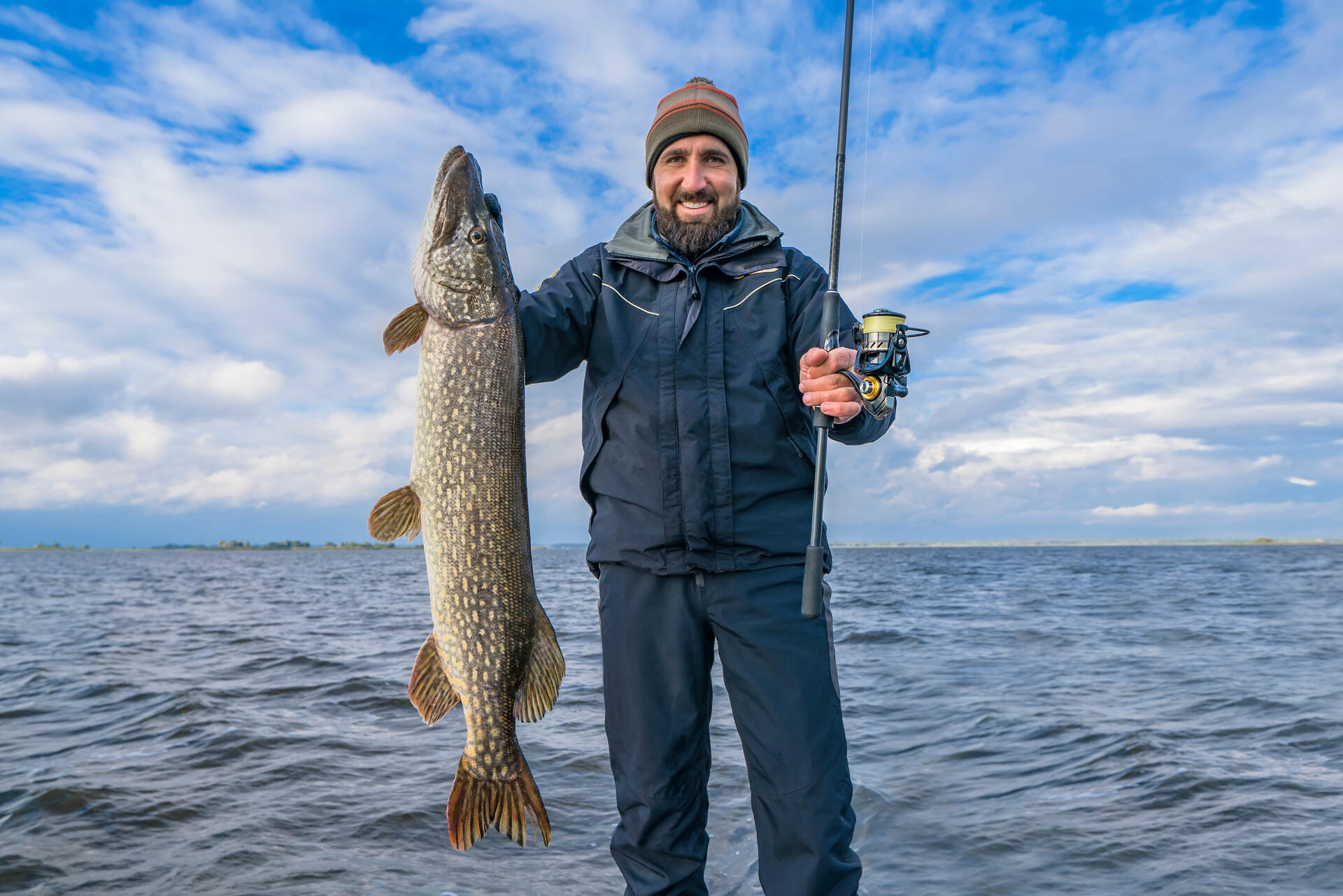
#5 Blue Catfish – The Whiskered Warriors of the Watery Depths
Blue catfish are not only a staple in North American sportfishing but are also sought after for stocking in reservoirs and fish ponds. Known for their impressive size and distinctive appearance. These whiskered warriors are a favorite among both seasoned pros and beginner anglers. Here are some of their most recognizable features:
- Long, tactile barbels around the mouth, essential for sensing and hunting,
- Slate blue on the back, fading to a lighter belly,
- Large, powerful dorsal and pectoral fins for agile movement.
When it comes to records, Richard Anderson’s catch from Kerr Lake in 2011 stands out as the winner. This record-setting blue catfish tipped the scales at an astonishing 143 pounds (65 kg). Its dimensions were equally impressive – measuring close to 5 feet (1.5 meters) in length and boasting a girth of approximately 3.7 feet (1.1 meters).
Where Can You Find Blue Catfish in Large Numbers?
Blue catfish, revered for their size and strength, are commonly found in the deeper sections of lakes and slow-moving rivers. They show a preference for areas with firm substrates, such as gravel or rock beds. Despite these specific preferences, this species is incredibly adaptable and can thrive in a wide range of environments.
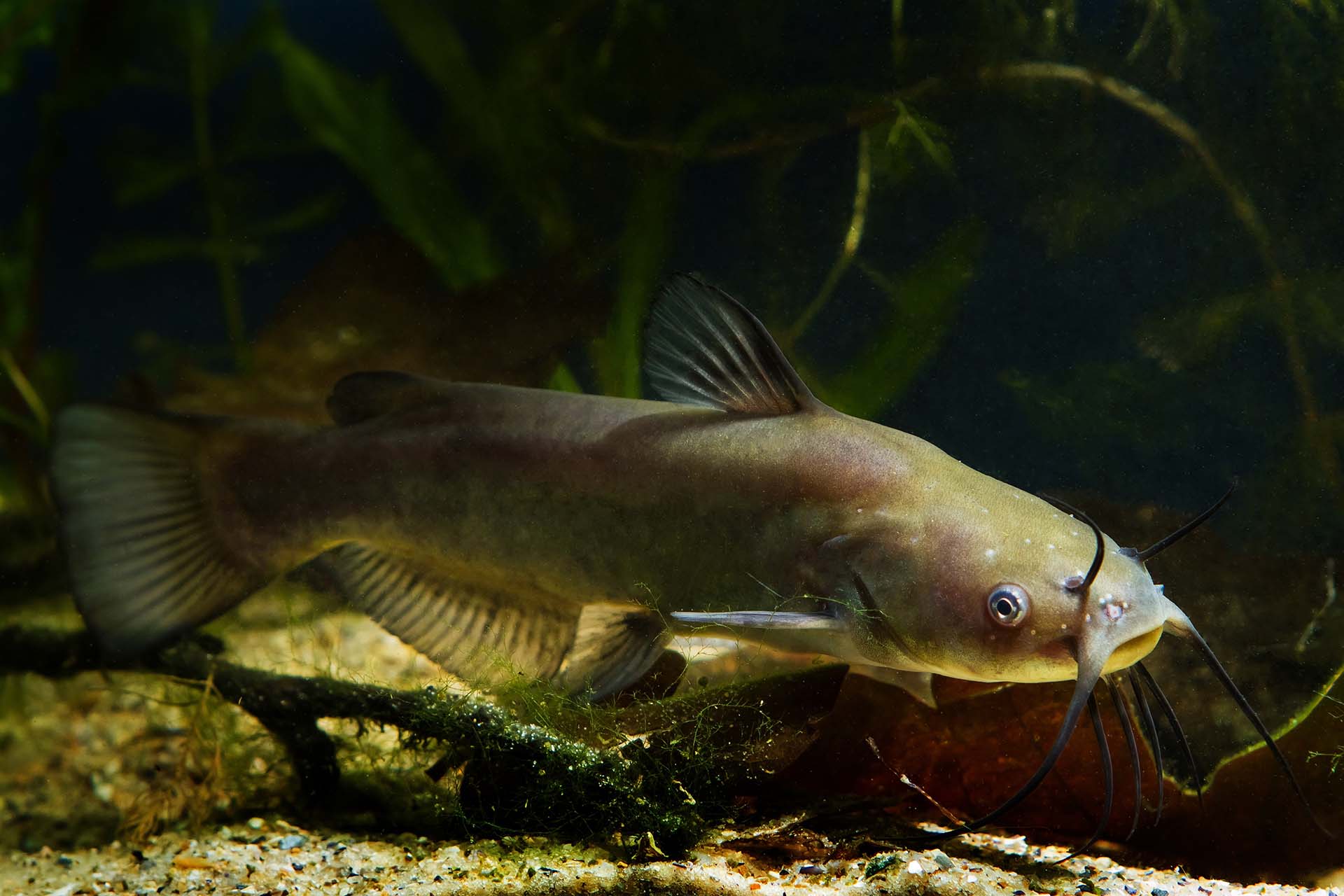
#6 Northern Pike – The Freshwater Fierce With a Needle-Like Grin
The northern pike, a close cousin to the aforementioned muskellunge, is known for its aggressive nature and distinctive appearance. Its presence in water bodies is marked by a blend of awe and caution, reflecting its status as a top predator and a prized catch, regardless of the angler’s style preferences. Here’s how you can recognize this impressive creature:
- Streamlined and torpedo-like body shape, built for sudden bursts of speed,
- Olive green body with white to yellowish spots,
- Sharp, needle-like teeth, ideal for gripping prey.
Lothar Louis holds a place of envy among millions of dedicated fishermen worldwide. Nearly 30 years ago, he achieved a remarkable feat by catching a northern pike weighing 55 pounds (25 kg) in Lake Grefeern, Germany. This record-setting catch remains a testament to the potential size and strength of the species, capturing the imagination of anglers across the globe.
Where Can You Find the Northern Pike?
Northern pike are versatile predators found in various freshwater environments, capable of inhabiting waters as deep as 100 feet. They are commonly found in clear, vegetated lakes, where they use the aquatic plants as cover for hunting.
Additionally, Northern pike flourish in the quiet pools and backwaters of creeks and rivers, taking advantage of these calmer waters to ambush their prey. They are also well-adapted to living in reservoirs, making the most of the expansive and varied environments these artificial water bodies offer.

#7 American Eel – The Slippery Mystics of North American Waters
The American eel is known for its unique and somewhat mysterious life cycle. One of the most intriguing aspects of this species is its ability to survive out of water for several hours. A feat made possible by its ability to breathe through its skin. This remarkable adaptation is just one of the many features that set the American eel apart from other aquatic species. Here are some other recognizable features:
- Long and snake-like body shape,
- Ranges from olive green to brown, with a yellow or white belly,
- A continuous dorsal fin extending around the tail to the ventral side.
The record for the largest American eel dates back to November 1995, when Jeff Pennick reeled in a specimen in Cape May, New Jersey. This remarkable eel weighed an impressive 9 pounds (4 kg), showcasing the potential size these creatures can reach.
Which Regions Does the American Eel Lurk In?
As we’ve gathered by now, the Mississippi River is home to most of these large catches, and the American eel is no different. While it primarily resides here, in streams and estuaries, it also has a unique relationship with the Atlantic Ocean when it’s time to spawn.
Reeling in These North American Titans Doesn’t Have to Be Only a Fishy Daydream
As we reel in our exploration of North America’s freshwater giants, it’s clear that these waters are more than just a home for fish. They’re a repository of natural wonders and ancient secrets. Whether lurking in the depths of the Mississippi or journeying to the Atlantic, these creatures remind us of the rich biodiversity hidden beneath the surface. So, the next time you cast a line or gaze into these waters, remember the titanic tales and extraordinary lives of these underwater behemoths.

